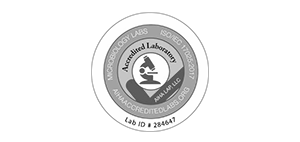
How Does Colder Temperatures Affect Mold Growth?
Mold is generally thought of as a seasonal problem. Many homeowners commonly think mold problems and issues disappear when the colder weather approaches. Since temperature does affect the way mold grows, it’s a year-round problem.
Mold Related To Temperature
First let’s discuss what temperature mold tends to grow at. Mold, being a living entity, grows and produces best at temperatures between 60- and 80-degrees Fahrenheit. However, different types of molds have differing maximum and minimum temperature ranges. Fluctuations of temperature (similar to water condensation) can also produce moisture that is necessary for mold growth. Mold typically grows well in warm and moist areas, but some types of molds can grow at close to freezing temperatures. Different types of molds prosper under different conditions, and some molds are more likely to grow in the winter months than others. Mold requires three crucial things to grow, an adequate food source, enough moisture, and the right temperature. Contrary to what most people think, like mentioned above, mold doesn’t only grow in warm environments. However, the common and practical temperature of mold growth is also ideal for our comfort as humans, and we tend to heat and cool our homes and offices to stay within those parameters.
Different species of mold and fungus can grow in temperatures between 32-77 degrees Fahrenheit. Cooler temperatures can slow down the rate of growth and development of mold, but it will not prevent it from growing completely. Does mold thrive more in warmer temperatures? Yes, but some types of molds can tolerate the cooler temps and grow at a slower pace/rate. As discussed, prior, mold needs moisture present to grow. Even in cooler temperatures, mold spores are still able to germinate and start to grow. Hence, why it is critical to take the necessary steps and precautionary measures to prevent mold growth in your home. For example, reducing humidity levels and fixing any sources of moisture, regardless of the outdoor temperature.
Understanding where and how different types of molds can grow in your home is very important during all months and seasons of the year, even winter. With suitable conditions, growth of mold on surfaces within your home can be dangerous to one’s health. Cold weather does not kill mold. Extreme temperatures can temporarily deactivate mold, and cause mold spores to go dormant and will begin to multiply and grow again as soon as the temperature rises. These molds and fungal spores are just waiting for the ideal conditions to start growing again. That’s why controlling the temperature of the mold affected areas alone will not solve your mold problems and should not be used as a simple solution. The key to removing mold from your home and keeping it from reappearing is to control humidity levels and prevent the buildup of moisture.
Where Does Mold Grow In the Cooler Months?
The cooler seasons, like fall and winter bring precipitation and dewdrops. Surfaces in homes tend to collect moisture during these times. For example, windows. Moisture builds up on and around windows in the winter due to condensation, which happens when warm air hits a cold surface. As temperatures drop during the winter months, the warm, heated air in your home encounters the cool glass of your windowpanes. This causes water vapor to accumulate, leading to moisture buildup around your windows. Windowpanes are ideal places for mold to expand and grow during the colder months.
What normally pairs with mold? Allergies! Allergies are very common with mold growth and can cause a variety of unpleasant symptoms, including itchy/ watery eyes, coughing/sneezing, itchy/ runny nose, throat complications, and skin irritations. Many people notice their allergy symptoms decrease and calm down when temperatures begin to drop. Unfortunately, people who have mold allergies often experience more symptoms during the winter months, when they are more likely to be indoors for extended periods of time. Mold allergies are generally worsened by indoor heat. Mold spores that have been collected in the air ducts and other places can be sent into the air causing allergic reactions/symptoms for people who suffer these types of allergies.
Although mold is an important and significant element of maintaining a vital outdoor ecosystem, indoor mold can cause damage to your health and home. Whether you’ve noticed symptoms of mold allergies, having difficulties breathing, or you’ve encountered an abnormal, musty/earthy odor in your home it is extremely important to try to locate and pinpoint where the mold source is coming from and why! Taking the necessary steps and precautionary measures to remove the mold growth and maintain a clean healthy indoor environment is key.
Stay Healthy!
Marissa Kopacz
Laboratory Manager, Air Care Companies







